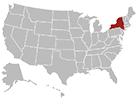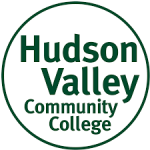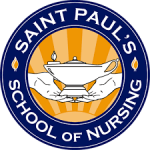
If you are looking to become a dental assistant in New York, it is important to understand the role, the schools that offer training, and the salary before jumping in.
Dental assistants conduct a variety of administrative and clinical duties under the supervision of a dental hygienist or dentist.
They assist their superiors during dental treatments and examinations, including aftercare, assisting with materials and instruments, sterilizing instruments, taking x-rays, and preparing the patient.
Administrative duties include billing for service, maintaining patient files, and scheduling appointments.
If this sounds like the right career path for you, keep reading to learn more about the dental assistant process in New York!
Page Navigation
- 5 Dental Assistant Schools in New York
- Salary
- Sources
- Frequently Asked Questions
- Where do dental assistants work in New York?
- What education is required by New York State to become a dental assistant?
- What is required to become a certified dental assistant in New York?
- What are the New York State licensure requirements?
- What are the first registration and licensure fees?
- What functions can a New York State licensed registered dental assistant to perform?
5 Dental Assistant Schools in New York
In New York, dental assistants can perform numerous tasks when authorized by a dentist.
To be hired by an employer, you must have formal dental assistant training, although not required by the state.
Some of the best dental assistant schools in New York include:
Erie Community College

Located in the Buffalo area and part of the SUNY system, Erie Community College offers a dental assisting certificate program that satisfies national and state requirements via laboratory and clinical practice and procedures, dental sciences, and biomedical science coursework.
Students learn about neck and head anatomy, equipment and procedures, dental instruments, fabrication of dental products, dental emergencies, sterilization and disinfection procedures, x-ray techniques, equipment procedures, dental instruments, and dental materials.
Hudson Valley Community College

This one-year, online program offered by Hudson Valley Community College prepares graduates to conduct numerous dental office tasks, including office duties, material preparation for dental procedures, and instrument sterilization.
This program was created for those wanting to immediately enter the workforce after graduation while satisfying New York State requirements for the Licensed Registered Dental Assistant certification.
Monroe Community College

MCC is considered one of the best dental assistant schools in the state.
With a program that lasts only one year, students are given visibility to chairside assisting, office procedures, and laboratory processes.
This program is accredited and allows graduates to take the National Certification Exam or any New York State-specific exam.
New York School for Dental and Medical Assistants
![]()
Situated in Queens, the New York School for Dental and Medical Assistants offers a program that lasts 16 months and awards candidates with a Medical Assisting AOS degree.
Students learn about physiology and anatomy, pharmacology, treatment room procedures, EKG, computer applications, laboratory techniques, electronic health records, health insurance, and medical office management.
St. Paul’s School of Nursing

The St. Paul School of Nursing dental assisting program offers hands-on techniques and strategies that allow graduates to work with dentists in examination and treatment rooms.
Students learn clinical, educational, and preventative therapeutic services and how to promote healthy dental hygiene.
Additional teachings include chairside assisting and dental specialty practices.
This program combines laboratory and lecture instruction with clinical experience.
Salary
The national median income for a dental assistant is around $41,000 per year, with a range of $36,200 to $45,300.
In New York State, the cost of living varies so much, that the average salaries are different depending on your location.
In New York City, the average income is $49,100 with a range of $38,500 to $59, 400.
In Buffalo, the average income is $39,000 with a range of $30,600 to $47,200.
Sources
- Dental Assistants – New York Health Careers (healthcareersinfo.net)
- NYS Dentistry: Certified Dental Assistant License Requirements (nysed.gov)
- 9 Best Dental Assistant Schools in New York – 2022 (nursingprocess.org)
- NYS Dentistry: License Requirements (nysed.gov)
Frequently Asked Questions
Where do dental assistants work in New York?
While most dental assistants are employed at clinics and in dental offices, some work in doctor’s offices and hospitals in a full-time capacity.
It is also possible to work in dental equipment sales or for a dental insurance company with a dental assistant background.
What education is required by New York State to become a dental assistant?
Although no training or education is required by the state, it will be required by the employer and for licensure.
The only prerequisite to be accepted into a training program is a high school diploma or equivalent degree.
What is required to become a certified dental assistant in New York?
To earn this designation, candidates must finish a New York State-approved dental assistant education program.
Most programs last approximately one year and can be taken at the local BOCES (Boards of Cooperative Education) chapter or community college.
What are the New York State licensure requirements?
To legally be able to use the title, “Registered Dental Assistant,” when employed in New York, dental assistants must earn a license.
To become licensed, candidates must be at least 17, complete a dental assistant training program, finish the three exams, file a licensure application, and pay the fee.
What are the first registration and licensure fees?
The first registration and licensure fee are $103.
For those who need a limited permit, the cost is a non-refundable $40.
The state requires a personal check or money order if sent by mail, or a credit card when applying online.
What functions can a New York State licensed registered dental assistant to perform?
Licensed dental assistants can perform a variety of functions including:
- Communicate patient education.
- Take preliminary vital signs and medical histories.
- Remove and place rubber dams.
- Prefit provisional crowns.
- Prefit orthodontic bands.
- Remove orthodontic ligature ties and archwires.
- Remove and place matrix bands.
- Take impressions.
- Remove periodontal dressings.
- Remove sutures.
- Remove temporary cement.
- Apply topical anti-cariogenic agents.
- Apply desensitizing agents.
- Remove and place temporary separating devices.
- Place orthodontic ligatures.
- Take dental x-rays.
- Perform other supportive tasks.




